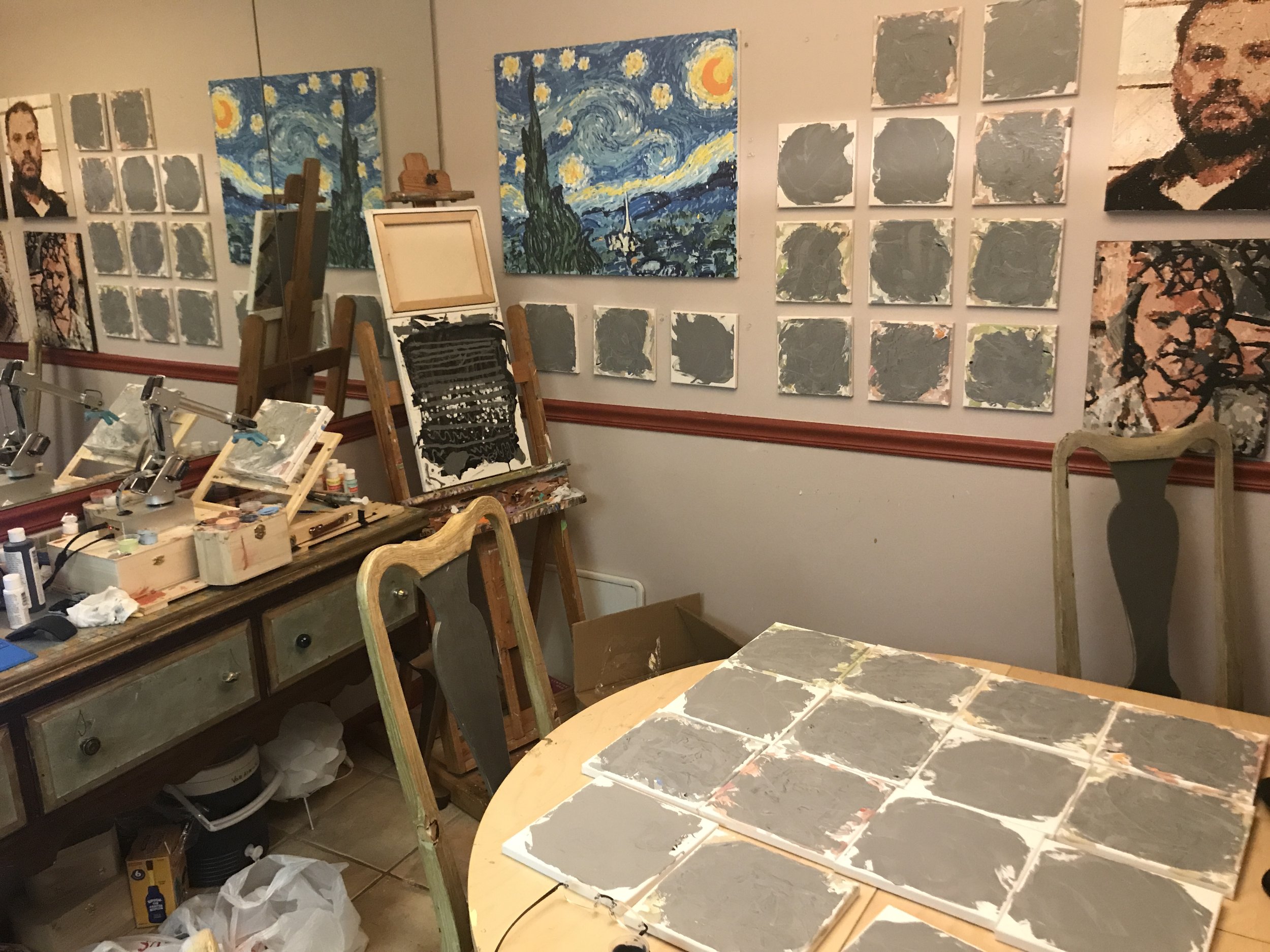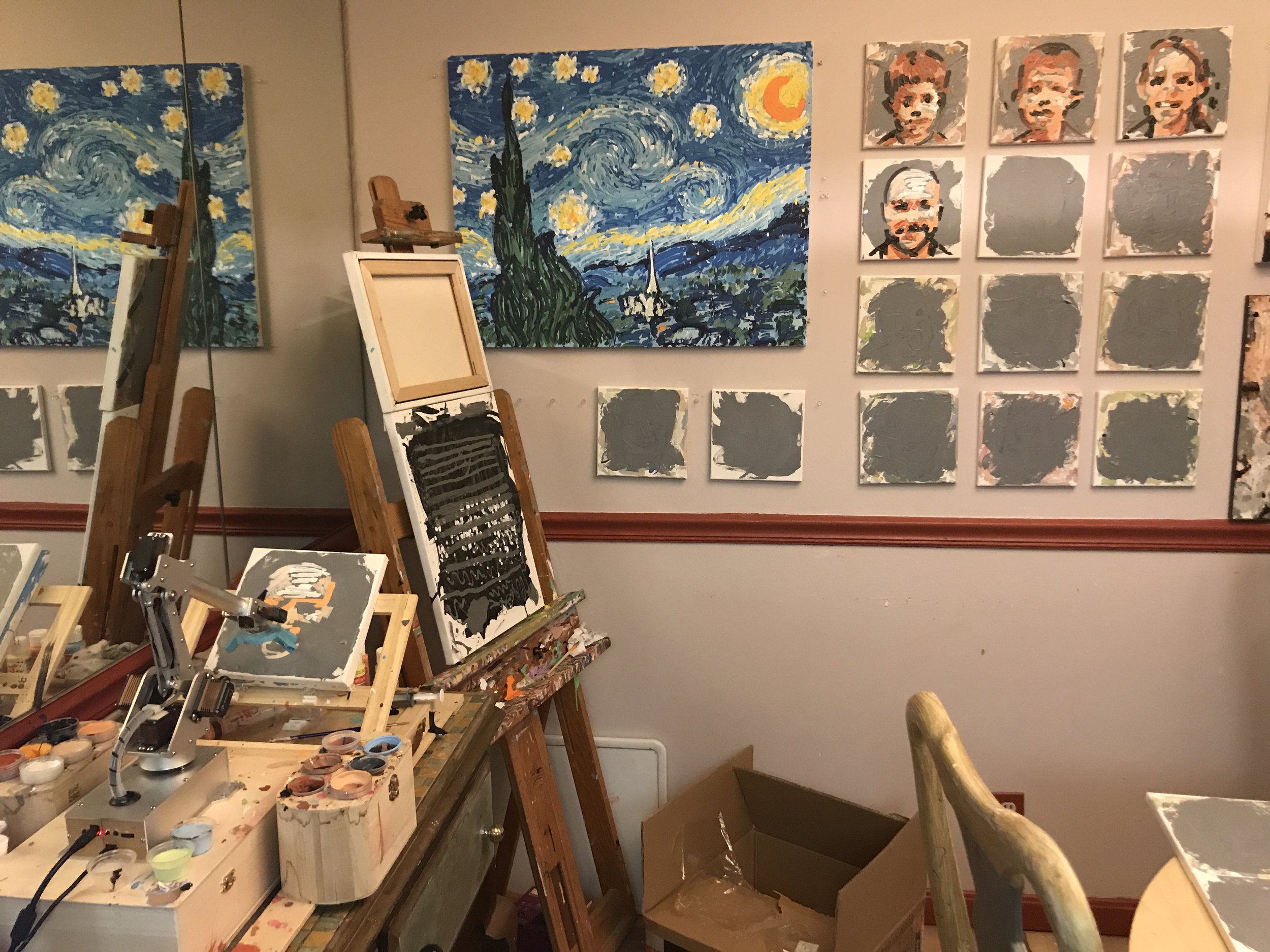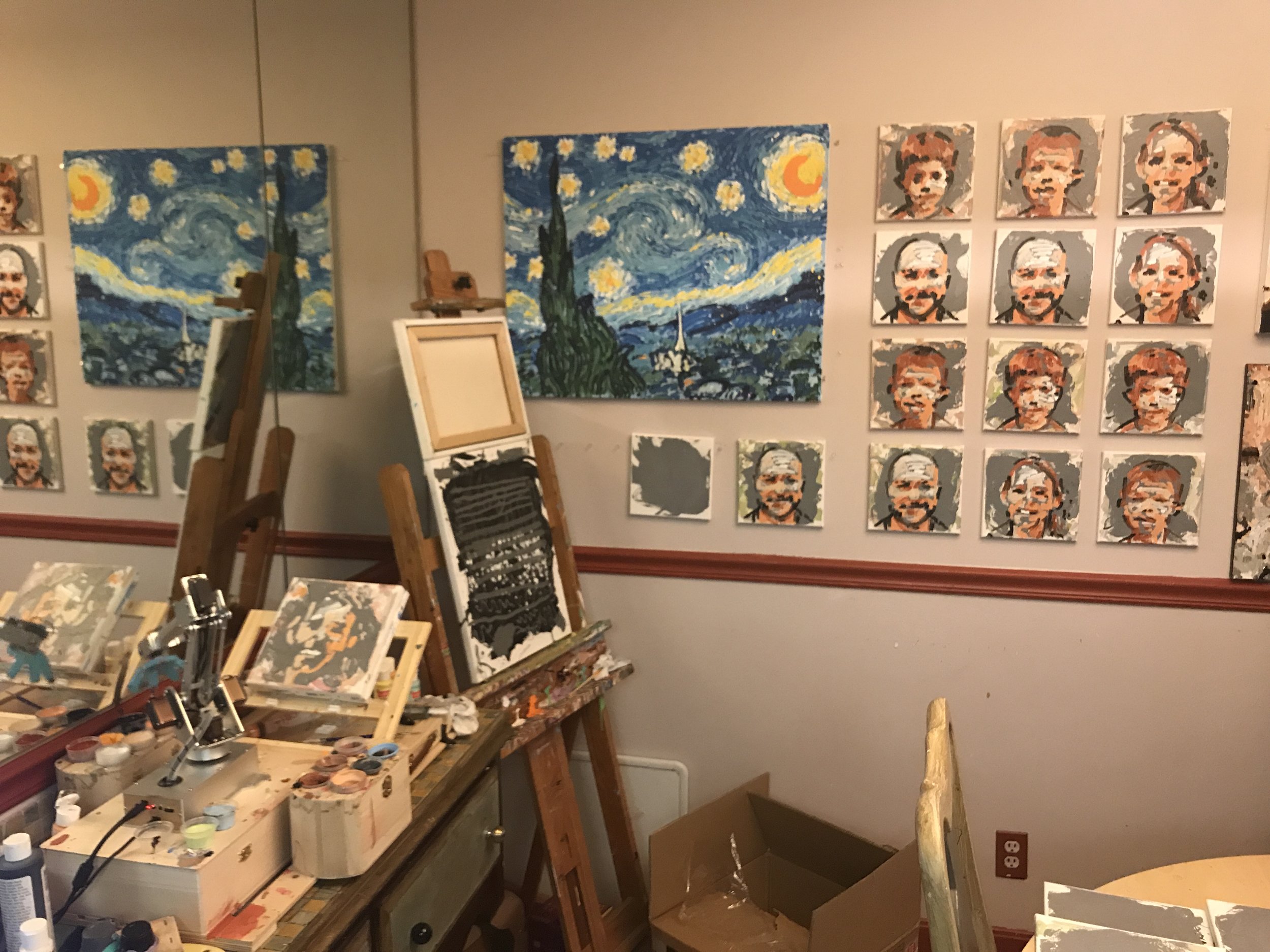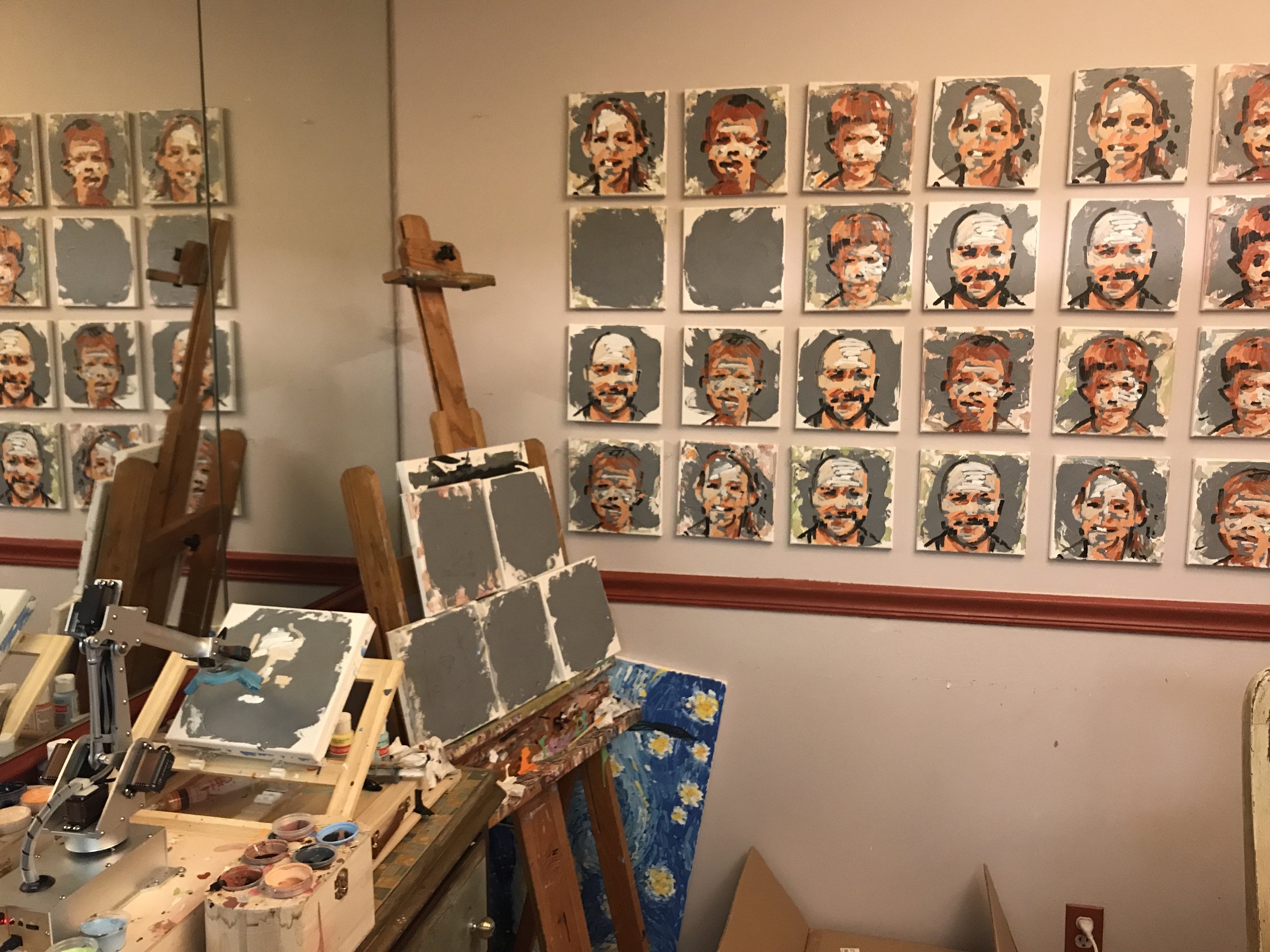Converting Art to Data
There is something gross about breaking a masterpiece down into statistics, but there is also something profoundly beautiful about it.
Reproduced Cezanne's Houses at the L'Estaque with one of my painting robots using a combination of AI and personal collaboration. One of the neat things about using the robot in these recreations, is that it saves each and every brush stroke. I can then go back and analyze the statistics behind the recreation. Here are some quick visualizations...
It is weird to think of something as emotional as art, as data. But the more I work with combining the arts with artificial intelligence, the more I am beginning to think that everything is data.
Below is the finished painting and an animation of each brush stroke.
Artobotics - Robotics Portraits
While computational creativity and deep learning has become a focus of many of my robotics paintings, sometimes I just like to make something I am calling artobotic paintings, or artobotics.
With these paintings I have one of my robots paint relatively quick portraits, but not just one, dozens of them. The following is a large scale portrait of a family that was painted by one of my robots over the course of a week.
Work Continues Mapping the Brushstrokes of Famous Masterpieces
Once I created a brushstroke map of Edvard Munch's The Scream, I thought it would be cool to have brush stroke mappings for more iconic artworks. So I googled "famous paintings" and was presented with a rather long list. Interestingly The Scream was in the top three along with da Vinci's Mona Lisa and Van Gogh's Starry Night. Well, why not do the top three. So work has begun an creating a stroke map for The Mona Lisa. In the following image, the AI has taken care of laying down an underpainting, or what would have been called a cartoon in da Vinci's time.
I am now going into it by hand and finger-swiping my best guess as to how da Vinci would have applied his brushstrokes. Will post the final results as well as provide access to the Elasticsearch database with all the strokes as soon as it is finished. My hope is that the creation of the brushstroke mappings can be used to better understand these artists, and how artists create art in general.



















